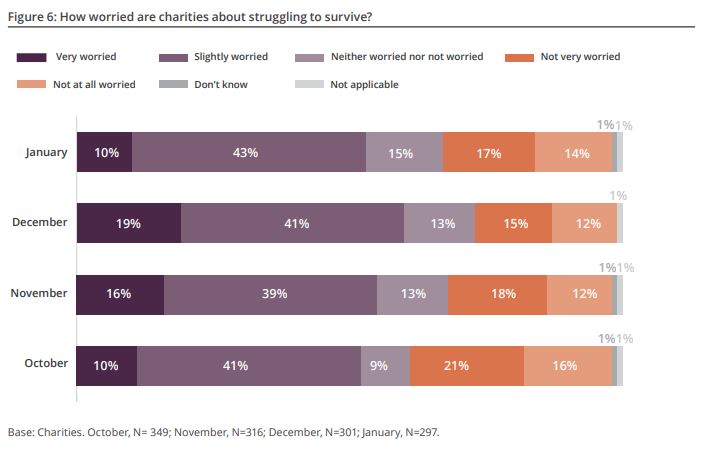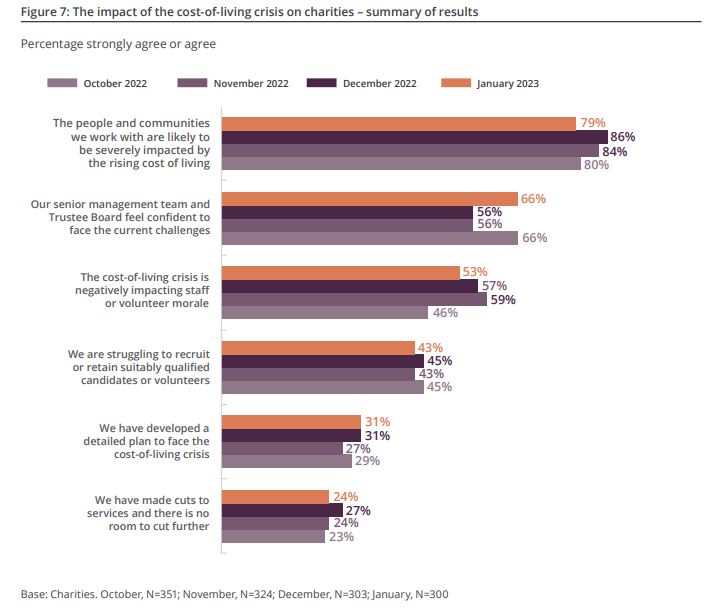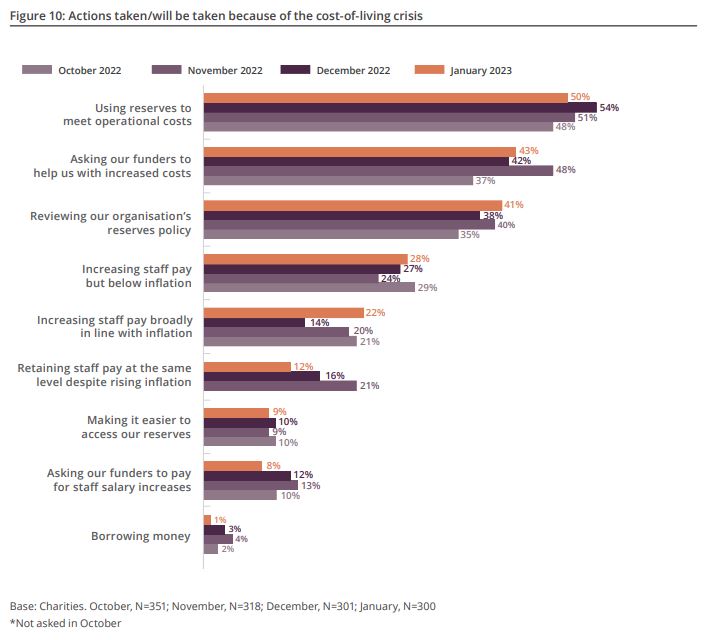The impact of the economic crisis on charities in the United Kingdom
The impact of the economic crisis on charities in the United Kingdom
Publié le 5 mai 2023
Charities find themselves facing a real challenge with increased demand and costs. More than half of surveyed charities are worried about their survival.

Focus on the Charities Aid Foundation’s report entitled “How the cost-of-living crisis is affecting the sector” in the United Kingdom. Just as the sector got rid of the economic and societal disruptions of the Covid-19 pandemic, inflation started to build up in 2021. The study goes into detail about the impact of the economic crisis on charities in the United Kingdom.
The method used in the report: Charities were asked to rate their confidence on a scale from 0 to 10, on six statements/measures about their income stability, demand for services and operating costs. 1 323 charities across all four nations of the United Kingdom were interviewed from October 2022 to January 2023.
How secure are charities and communities in this crisis?
Overall, more than half of the surveyed charities stated that they were “very-worried” or slightly worried” about struggling to survive. However, this feeling of insecurity had an increase of 9% during the month of December with 60% of charities being worried. By January 2023, this number decreased and went back down to 53%. Even though there is a decrease, this shows that majority of charities are not feeling secure for their future.

Not only charities are not feeling secure, but they also believe that the communities they work with are most likely to be severely impacted by the rising cost of life. As a matter of fact, 79% of charities agreed in January that the communities will be severely impacted, down slightly from a high of 86% in November.
More than half of these charities being 53% in January, with a high of 59% in November, also state that the crisis negatively impacts their staff or volunteer’s morale. We can deduce that this also impacts their productivity and satisfaction at work. Furthermore, almost a quarter of charities surveyed since October 2022, agree that they have made cuts and have no room to cut further in their services, meaning they are losing staff and must lower their productivity.

The cost-of-living crisis has also increased demand for services to charities. As a matter of fact, the charities working for the prevention or relief of poverty reported the most increase with 87% compared to last year. However, it is important to know that demand also varies depending on where the charities are based. Actually, 67% of charities are in the North of the United Kingdom, with 40% of them stating that that demand has increased “a lot” for them.
How did charities respond to the cost-of-living crisis? – The impact of the economic crisis on charities
As we can see on the chart number 2, only around 30% of charities have developed a detailed plan to face this crisis. This can be the result of most charities’ (66%) senior management feeling confident to face the current challenges, and therefore not developing a plan.
However, almost all charities had to adapt and take action to respond to this crisis. For example, almost half of them used reserves to meet their operational cost or asked their funders to help them by donating money. Some of them even had to borrow money.

In conclusion, charities find themselves facing a real challenge with increased demand and costs. The concern is particularly critical among charities involved in support or care services. With only one in three charities being highly confident in their funding and half of them being worried about their survival, 2023 is going to be an important year socially and economically for them.
 |
Article écrit par : Ipek Aykut Chargée de communication junior |
Image de pch.vector sur Freepik
Pour recevoir toutes les actualités du secteur en avant-première, inscrivez-vous ici.
